Cat teeth: number, structure and care for them

Caring for a cat is a very demanding task. In order for an animal to remain healthy and happy, you need to take care of its fur, claws and even teeth on a regular basis.
Formation and structure of the jaw
Most often, the cat's jaw is quite well developed and has one feature: its movement occurs only in the vertical direction. Cats cut the incoming food with their sharp teeth. The upper and lower jaws are symmetrical in relation to each other.
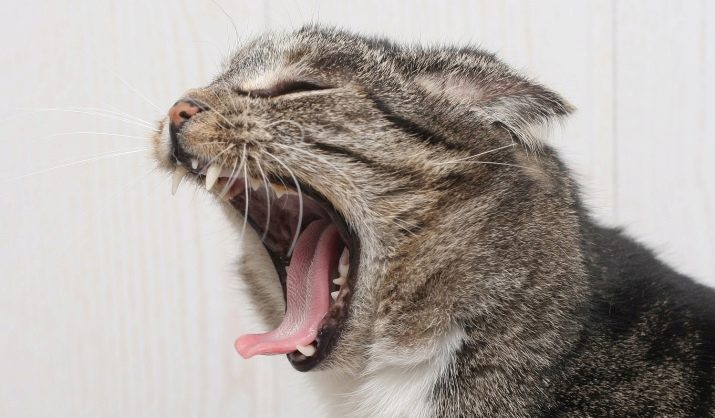
The structure of the teeth of an animal is almost the same as that of a person. Every cat tooth has pulp, dentin, tooth enamel, and root. The placement of a cat's teeth is quite simple.
- There are 12 incisors in front, which are mainly intended to hold prey in the mouth and cut food before swallowing.
- A little further, there are very long canines: two of them are at the top, and two are at the bottom. They are intended for chopping food, and are also needed by cats for self-defense. In a fit of aggression, a cat can even bite a person's hand.
- The premolars are located behind the canines - these are short and fairly wide teeth. On each side there are 3 premolars on top and 2 on the bottom.
- The outermost teeth - molars - are located at the back of the jaw. There are only 4 of them: 2 on top and 2 on the bottom - one in each corner.
The incisors are cut first, then the canines are formed. This happens 1 month after the birth of the kitten. Immediately after their formation, and in some cases and simultaneously with the canines, premolars begin to appear.The molars are the last to climb.
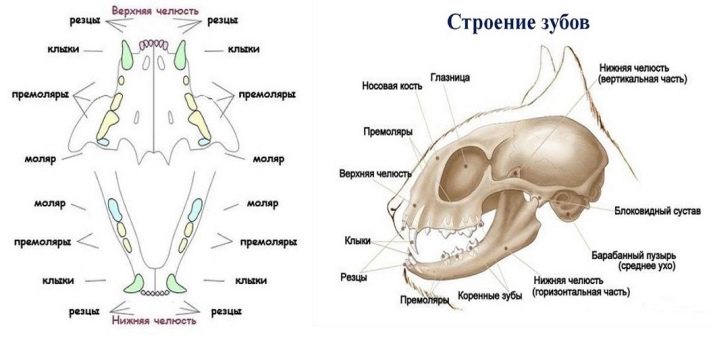
Number of teeth
Cats' teeth grow a little faster than humans. So, for example, without teeth, they live only 2-3 weeks after birth. If incisors do not appear at this stage, this is already a reason for a visit to the veterinarian.
Kittens
First, kittens develop milk teeth. At this time, pets may bite, as the gums are very itchy. In addition, saliva begins to be actively secreted. And although usually people do not pay attention to it at all, a kitten suffers just like a human child.
Therefore, for those who care for their cats, it is best to purchase a special pain reliever at a veterinary pharmacy. They need to smear the places where the teeth appear. By the age of 3 months, kittens have 26 milk teeth, 14 of them are on the upper jaw, and 12 are on the lower.
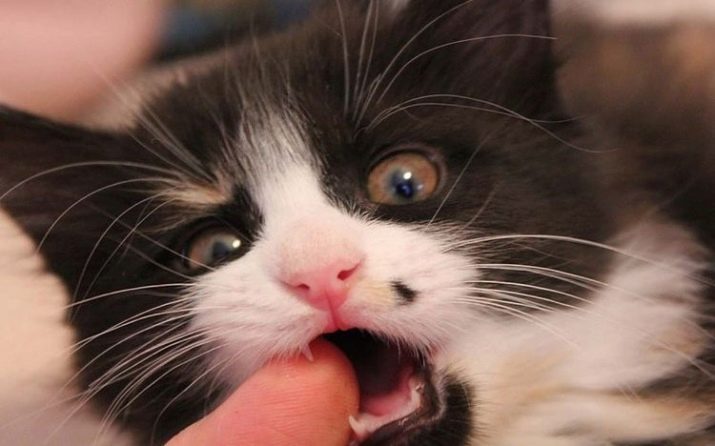
In adult cats
After 120-160 days, milk teeth fall out and permanent teeth appear, in the same sequence as milk teeth. The jaw formation process is completely completed by 8 months. A healthy adult cat should have 30 healthy teeth... If their number is less or more, this is already considered a deviation from the existing norm.

Possible pathologies
Cats, like humans, can develop a variety of dental problems. In this case, it is best to turn to good specialists. There are veterinarians who specialize in dentistry.
However, the owners themselves need to be aware of the main problems that may arise in their wards.
Yellowness
Most people are oblivious to this. However, experienced breeders or animal owners who participate in shows are immediately eyeing this point. And that's exactly right after all, this problem is nothing more than tartar, which can appear in any animal.
The main reason is the hardening of plaque, which slowly settles on the teeth of pets, and then begins to destroy the enamel. Subsequently, tooth decay occurs, and then teeth fall out. In addition, this also happens when the cat is fed only soft food. To prevent this from happening, you can give the kitten crackers, only without any chemical additives.
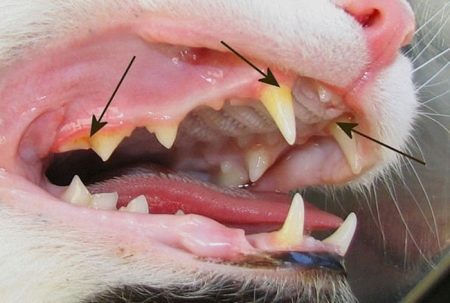
Dropping out
If we talk about this pathology, then there can be many reasons:
- the slightest injury to the jaw;
- stomach disease, as well as a slowdown in metabolism in a cat;
- improper antibiotic treatment;
- any viral infections;
- aging of the pet;
- taking certain hormones.
In addition, not every owner can immediately notice such a process. Such details are paid attention only when the cat begins to experience discomfort when eating. At this time, saliva begins to stand out, and the gums swell.
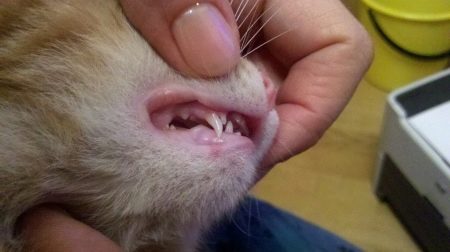
Resorption
Such a pathological deviation as tooth erosion can occur in both young cats and adults. It usually forms around the neck of the tooth, and sometimes deeper. This problem manifests itself most often in cats with poor genetics.
Not only not every owner is able to notice changes, but also not every specialist. After all, cats are very mobile and it is difficult for them to sit quietly in one place to be examined. Therefore, if there is no specific complaint about such a problem, then the doctor is unlikely to delay his attention on this.
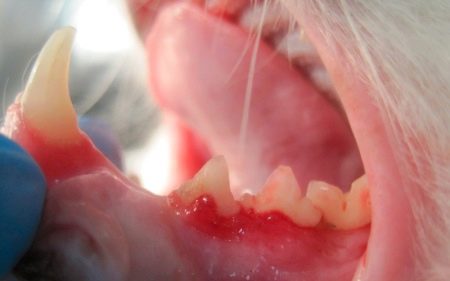
You can often see something that looks like chewing gum between the teeth of an animal. This is an overgrown gum tissue, of course, there is nothing good about it. Immediately after detecting such a deviation, you need to quickly contact a specialist in order to prevent further loss of teeth. The damaged teeth must be removed, as the treatment in this case will be simply useless.
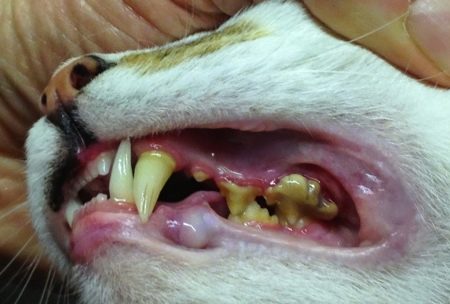
Periodontal disease
Most often, this problem appears as a result of a lack of vitamins or due to stomach problems. At first, the teeth begin to creak and wobble, and then they may even begin to fall out. Treatment should be carried out only under general anesthesia., since any touch will be very painful not only for the kitten, but also for the person, because during the examination the cat can scratch it.
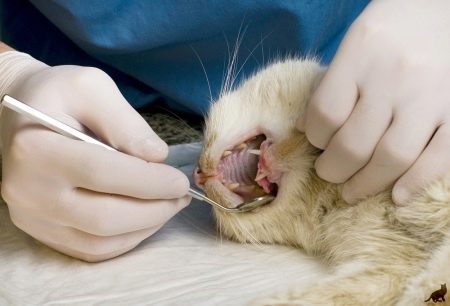
Age-related changes
The first changes in cats occur when milk teeth change to permanent ones. This begins to occur between about 5 and 8 months after their birth. After 2 years, the lower incisors begin to wear off. It is almost impossible to prevent such a process. However, you can delay a little time if you provide proper care for them.
By about 10-11 years of age, animals can lose several teeth. This is considered the norm.
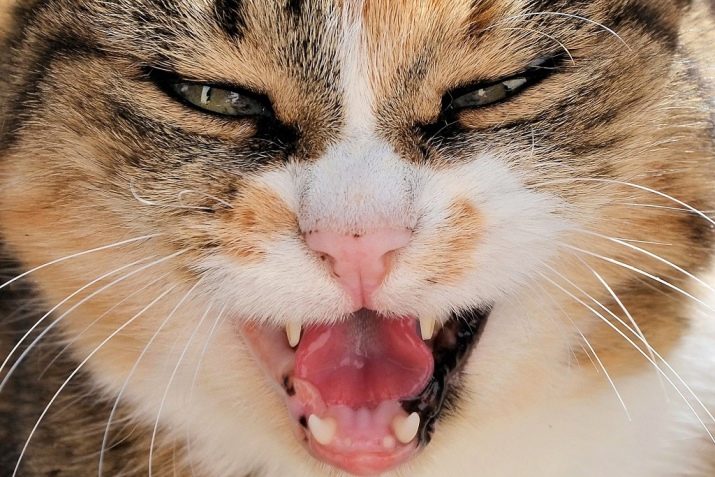
How to determine age by teeth?
As the cat's teeth change, the age of the animal can be determined. This can be done according to the following criteria:
- when the cat is 1 year old, it should have 30 white healthy teeth;
- after 1.5 years, yellowness appears;
- at the age of 2, the central incisors located on the lower jaw begin to wear out;
- at the age of 3, the central incisors of the upper jaw are already erased;
- for 5-year-old pets, dark plaque is characteristic on almost all teeth;
- upon reaching the age of 8, all upper and lower incisors are erased in cats;
- at the age of 10, the incisors begin to fall out in the lower jaw;
- after 13 years, the cat may not have a single incisor;
- after 15 years canine teeth completely fall out.
The older the animal, the more pronounced the yellowness of the teeth will be.
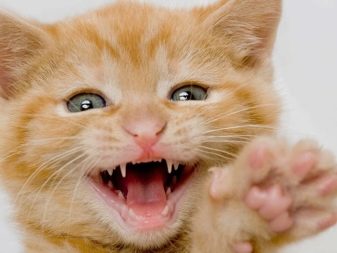

Care advice
To keep the teeth of animals in good condition as long as possible, you need to provide them with proper care, as well as pay special attention to feeding your pets. After all, healthy teeth will help to properly chew all incoming food. And if you brush your teeth in time, it will prevent the appearance of tartar.
Feeding
It is very important to feed your pets properly. It is necessary that their diet be completely balanced, that is, it includes all the vitamins and minerals necessary for this. This is especially important during the growth period of the animal, because at this time its bone tissue is fully formed. And this will allow cats to have healthy strong teeth in the future.

If store feed is used, then additional vitamins are not required, especially if the food is of high quality. These feeds can only be purchased at specialized veterinary pharmacies. If you buy food in supermarkets, then it is best to immediately purchase vitamins, since they may not be enough in the product.
Those who use natural food are advised to contact their veterinarian to prescribe an additional vitamin intake for their pet. You should not choose them yourself, because hypervitaminosis is the same problem as vitamin deficiency.
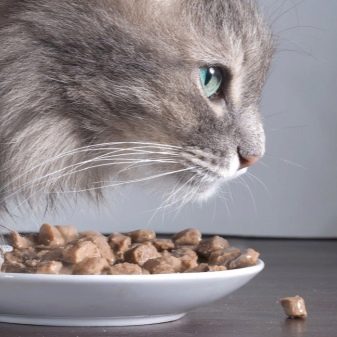
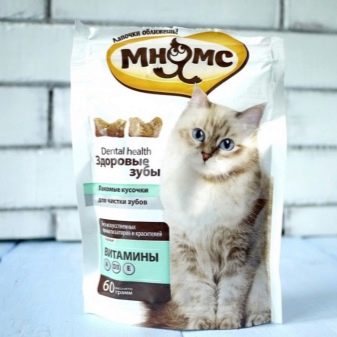
Water
With its help, you can perfectly clean the mouth of the cat. Irrigation of the mouth removes any bacteria that has appeared. Therefore, it is better if the water is always in the access zone of your beloved pet. It is advisable to change it several times a day, the water must be clean. It is also important to wash the bowl every time before pouring water into it.
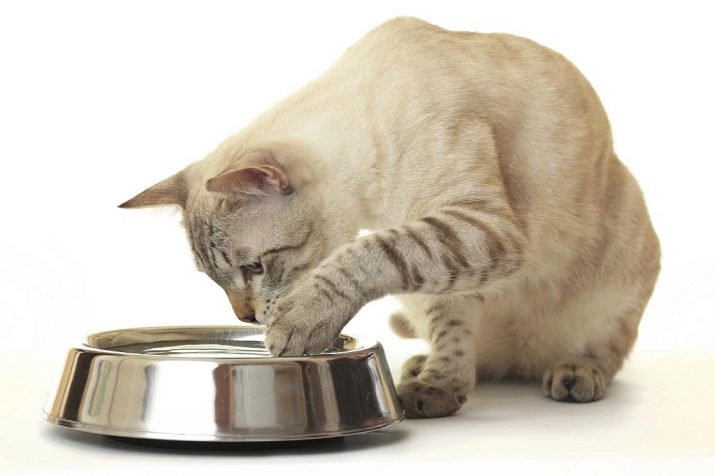
Hygiene
Oral hygiene plays an important role. That is why a cat needs a toothbrush no less than a person. However, it is better not to use toothpaste that is intended for humans. At veterinary pharmacies or pet stores, you can buy toothbrushes and toothpaste that are designed for cats. If such goods were not found in city stores, you can order them on a specialized website.
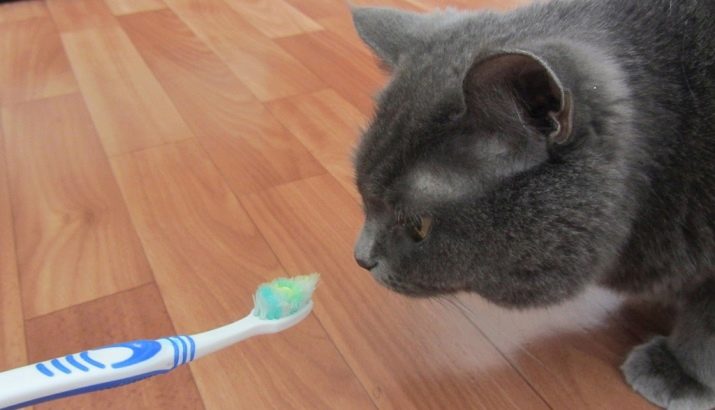
The very process of brushing your teeth is practically no different from the usual for a person. It is necessary to remove all contamination with light movements. It is necessary to brush from the very gums to the edge of the teeth, slowly.
This procedure should be carried out 2-3 times a week. It is necessary to start accustoming a kitten to it from childhood. Only in this case, an adult cat or cat will sit quietly during such a procedure.
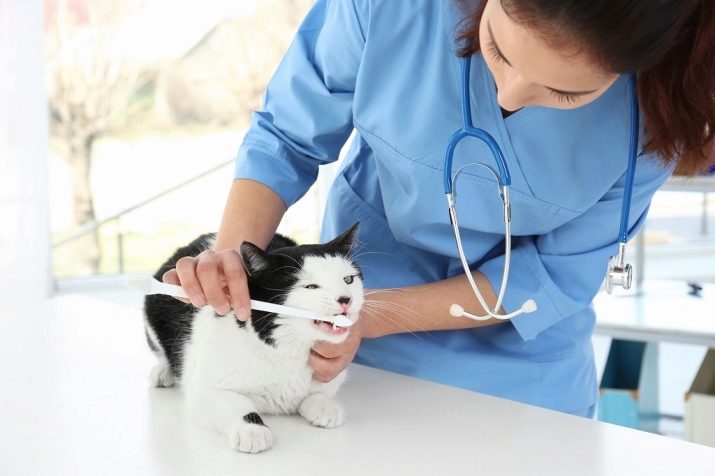
However, if the animal has some kind of dental disorders, then it is best to clean them under anesthesia, because this can cause pain. Accordingly, a cat can either scratch a person, or even bite him. To make the cleaning procedure more painless, it is best to take a children's brush. Alternatively, you can use a bandage that you wrap around your finger and then slide it over your pet's teeth. This will not replace a complete cleaning, but the cat will be more calm in this case.
Summing up, we can say that teeth for a cat are no less important than for humans. Therefore, in order for them to always be healthy, it is necessary to take care of their cleanliness. In addition, do not forget about vitamins, which will help them stay so as long as possible.
You can watch how to brush your cat's teeth in the next video.

































I had a cat, lived for 15 years and 3 months, retaining all the teeth, and they were white. She died of oncology.
And what was the main food?